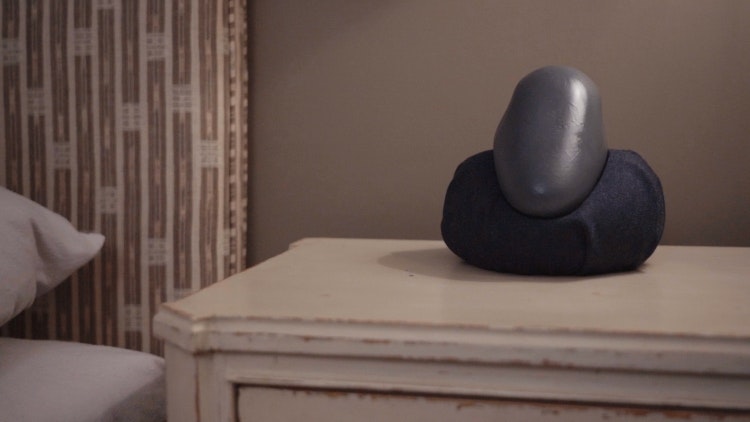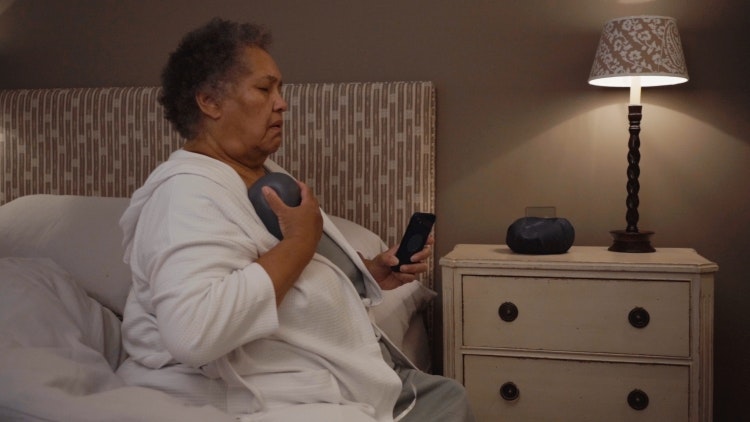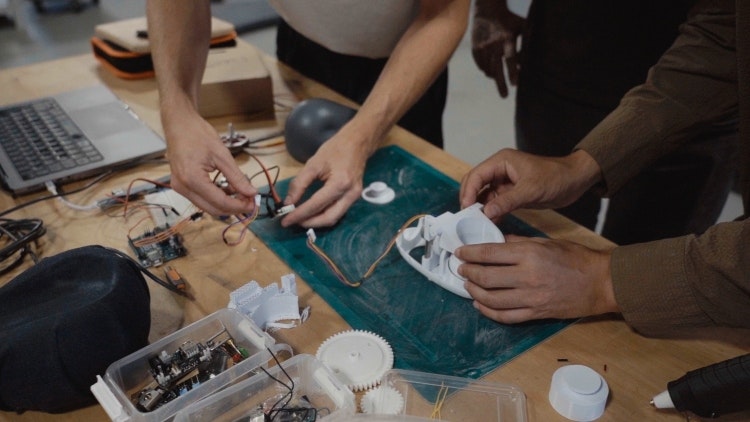A smart device that helps to manage mucus-related lung conditions and uses AI to analyse and monitor breathing sounds and mucus levels has won the UK National James Dyson award.
The team behind the Pleural device – Daniel Hale, Will Eliot, Fergus Laidlaw and Yihan Dong – met while studying a double masters in Innovation Design Engineering at Imperial College and the Royal College of Art in London. As well as some on the team having family members who suffer with chronic lung conditions, they all had a desire to “design for healthcare” with a focus on lung health in light of the COVID pandemic, says Hale.
He believes there is less awareness around mucus management because it is “quite unpleasant to talk about”. For people without lung conditions, clearing your airways can be as easy as a simple cough, whereas people with lung conditions, like cystic fibrosis and COPD, might have a weaker cough and less control over their lungs.

How does Pleural work?
In Current practice a manual session is carried out by a doctor, which involves finger-tapping percussions performed on a patient’s chest to generate impulse signals and help the patient clear mucus from the lungs. The doctor then analyses the patient’s response as well as their breathing sounds with a stethoscope.
Pleural was designed to “synthesise this technique” and uses a silicone cup to apply a calculated force to the chest at particular frequencies to help users clear mucus from their lungs, according to Hale. While performing manual chest therapy can take years of training, advances in machine learning have allowed the Pleural team to train an AI to execute the same task.

Both mucus clearance and analysis happen in tandem as users are guided through the chest therapy session on a Pleural smartphone app, paired with the device. Programmed routines instruct the user to move the device around various points on the chest and allow them to give feedback on whether they feel the mucus has cleared.
Because most patients with lung conditions are above the age of 60, the team considered whether they would be able to use the smartphone app. The early prototype has been designed with “simplicity in mind” and Hale says he thinks this is “a better solution than something without an interface at all or with a completely new interface or device”.

“The health service is overburdened”
As well as carrying out consultations with Asthma and Lung UK, support groups, and patients in their homes, the design team analysed existing services for mucus management. While manual chest therapy is effective, it comes with accessibility issues because “the health service is overburdened” and private healthcare can be costly, so patients don’t always get appointments when they need them, says Eliot.
Other at-home treatment options, such as vests that people wear for 20-30 minutes, can be “cumbersome, super expensive and not very intelligent”, says Eliot, adding that users reported feeling “embarrassed” when wearing it. He notes that existing handheld devices “lack the smart element” that this Pleural has, as the device is able to “analyse the mucus levels and breathing sounds through a combination of chest percussion and acoustic monitoring”.
This gives the user insight into how their chest condition and mucus levels are progressing over time without the need to see a doctor every month. In future, the data could also be transferred to GPs through an NHS network, according to Eliot.

Repairable and reusable
Pleural was initially designed as a device that could give patients medical autonomy at home, but it also has the potential to take pressure of doctors, nurses and physiotherapists in hospital respiratory wards. Having the devices on hand in the wards could mean that nurses don’t have to administer treatment to every individual. Doctors have already expressed that it could “really change how nurses’ time is allocated on the wards”, says Hale.
He explains how the device will most likely be made from plastic with a silicone outer shell “which is body safe and hygienic”. The idea is that the silicone casing could be easily taken off and cleaned to a clinical standard, making it suitable for reuse on hospital wards.
Ultimately, the team want to manufacture the device for “repair and disassembly” with “low impact”, recyclable materials, says Eliot, but at this early prototype stage, the focus is on technical feasibility and functionality.
The estimated cost of Pleural currently sits at around £500. Unlike the larger devices like the vests, which can also cost up to £4000, Pleural has “smaller moving parts and less complexity” and makes use of “off the shelf components” where possible to keep the cost low, Eliot explains.
He adds that team wanted to “empower the largest group of people that [they] can” and even envision that the device could be something that the health service procures and prescribes to patients for a certain period of time, at little or no cost.
With the £5000 prize from the James Dyson Award, the Pleural team plan to continue designing and manufacturing a final prototype and take the product to trial.

- Design disciplines in this article
- Industries in this article
- Brands in this article










